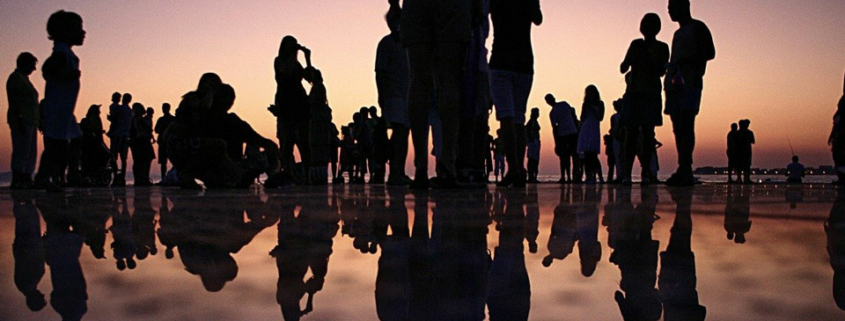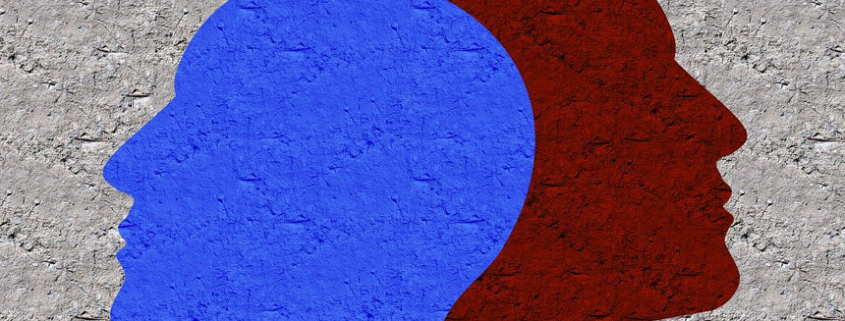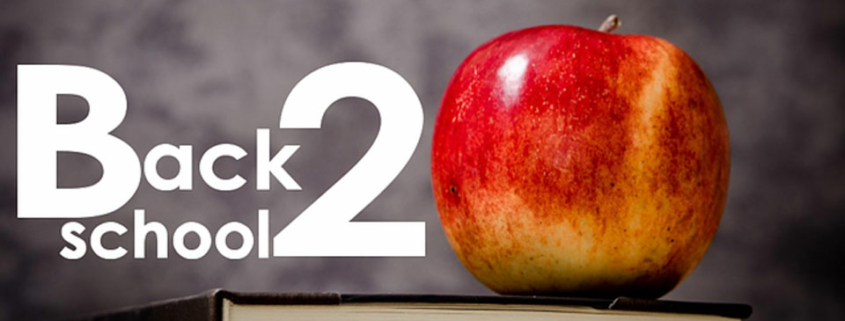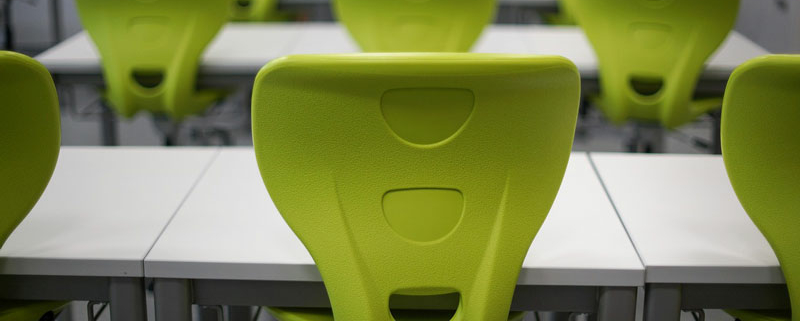How Culturally Responsive Teaching Re-Draws the Boundaries of the “In” Crowd
Why is it that so many kids crave to be part of the “in” crowd? What do they hope to gain? Regardless of what they’re looking for, being a part of the “in” crowd is a healthy desire.
We’re not talking popularity status. We’re talking about the astounding evidence that shows how students in the “in-group” and “out-group” have a vastly different life and educational experiences. Spoiler alert: you play a HUGE role in determining which students feel part of the “in-group.”
The Research
This post is about understanding how students in the right “in-group” tend to do better in your class. You’ll discover the secret to expanding the boundaries of the “in-group” to include ALL students.
In-Groups
You can see “in-groups” form when thousands of complete strangers gather in a stadium (pre-COVID) to cheer on their favorite sports team. For 2-3 hours, a social miracle of human bonding occurs. Nearly every person in the stands accepts and cheers WITH every other person, regardless of their age, political affiliation, gender, ethnicity, or knowledge of the sport. All it takes is sharing just one common, passionate value (our home team) to forge an “in-group.”
Other in-groups form as people gather in the streets to protest police brutality. Maybe they disagree on 25 other things, but on the one topic of police brutality, they have a common bond, and they’re all in the temporary “in-group.”
The groups an individual identifies themselves with are his/her “in-group.” Members of the “in-group” display co-operation, good-will, mutual help, and possess a sense of solidarity. There is a feeling of brotherhood and readiness to sacrifice themselves for the group (Masuda & Fu, 2015).
In a classroom, the “in-group” is typically the group of students whose culture matches (or is embraced by) the teacher. Teachers could be inclusive or exclusive in how they build their “in-group.”
Out-Groups
“Out-groups,” on the other hand, refer to those groups with which individuals do not identify themselves. Contrasting in- and out-groups are Democrats and Republicans, Yankee fans and Red Sox fans, and Pakistanis and Indians.
In- and out-groups will form in any classroom, even if the teacher does nothing but teach. It is true that “birds of a feather” will flock together. On their own, students usually create their own “in” or “out” groups. In-group members use the term “we” (vs. “they” for the out-group.) They identify with “our class” more than “the class.”
In a classroom, the “out-group” is the group of students whose culture is different from (or not acknowledged by) the teacher. Yet savvy teachers create an entire class as their newly organized “in-group”, and continually embrace others and expand it to include ALL the students as part of their BIGGER class “in-group.”
How?
Cultural Responsiveness!
The well-established “empathy-gap” between teachers and students of different cultures creates a barrier to learning worthy of attention. Recognizing and respecting all cultures in your classroom will yield high results both relationally and academically (Bottiani, Bradshaw, & Mendelson, 2016).
A student’s culture includes their ethnicity, religion, sexuality, language, skin color, and more. It is how a teacher responds to each student’s unique cultural identity that determines whether they feel part of the “in-group” or “out-group.” Teachers can positively respond by supporting students whose culture is different from their own.
Why does that matter?
Because not only do teachers influence the students’ choices of which group to be part of, the students who feel part of the “out-group” perform and behave below the “in-group” norms.
How?
The short answer is: Feeling excluded, isolated, or rejected increases the levels of cortisol in the brain. Simply put, feeling a part of the “out-group” is stressful. And the chronic stress experienced by minority cultures is causing devastating impacts on their body and brain. (Stanley & Adolphs, 2013).
When your culture (something HIGHLY relevant to you) is excluded or discriminated against in ways you can’t easily control, it is stressful. When this continues for months, years, or a lifetime, it is classified as chronic stress.
(For a quick review of other forms of stress – healthy stress and acute stress – revisit last month’s post The 3 Biggest Lies You’ve Been Taught About Stress)
1. Chronic Stress and Student Behavior
As you might recall from last month’s issue on stress, a useful approach to reducing stress is to seek more control and/or make things less relevant. However, when students engage in one of these strategies in the classroom, they can be perceived as “behavior problems.” A culturally responsive teacher sees the real problem is the over-exposure to chronic stress.
In the classroom, a student may behave a bit edgy, aggressive, or have a verbal outburst. Another student may appear to be disinterested or apathetic toward learning. A culturally responsive teacher recognizes these behaviors as a biological survival response to chronic stress – get more control or make things less relevant. They take the student’s response as feedback and seek out more relevant learning activities.
2. Chronic Stress and Student Academic Performance
Chronic stress associated with being part of the “out-group” impacts several areas of the brain (including the emotional systems, attentional systems, memory systems, and more.)
The constant worry of “Do I fit in here? Am I (and my culture) seen here? Will I be harassed today?” consumes the emotional systems of the brain, led by the amygdala. Since (social) survival is of greater importance than dividing fractions to the brain, attention is diverted away from the math lesson. This, in turn, significantly decreases the likelihood of accurate memory formation (Quaedflieg & Schwabe, 2018).
Put simply, stress hormones from chronic stress block cognition. When this plays out day after day, the result is students who don’t feel part of the “in-group” experience lower levels of academic achievement (Frazier, Gabriel, Merians & Lust, 2019).
This can lead to students in the “out-groups” being mislabeled and placed in special education classes. Without support or intervention, these patterns can be perpetuated and confirmed by teacher biases.
3. Chronic Stress and Student Social Connectedness
The defining feature of students in the “out-group” is a lack of belonging to the larger community. As social creatures, feeling isolated contributes to a stressful experience at school.
However, the majority of minority students perceive they are discriminated against by their teachers. Although a teacher might not think they are discriminatory, it is the student’s perception that matters most. And because of this common perception, minority students commonly report feeling their academic efforts are pointless (D’Hondt, Eccles, Houtte, & Stevens, 2016).
Practical Applications
There are many systemic changes needed to reduce the chronic stress experienced by students whose culture doesn’t place them in the “in-group.” As we work as a society to make those needed changes, there are things you can do in your own classroom and school to foster greater cultural responsiveness. Start opening the arena of success to more students with the tools below:
A Culturally Responsive Approach to Behavior
- Let empathy guide your discipline strategies. On the surface, it might seem appropriate to invoke a harsh discipline on a student who is using explosive vulgar language toward you. What happens when you look a layer deeper? Underneath the surface, a neuro-biological survival process is at play. In a classroom, this survival behavior often makes it difficult for the student, whose culture puts them in the “out-group,” to act well-behaved. Re-think whether a suspension is an appropriate response for a student who feels left out and may have responded with anxiety or distress.As you examine your discipline strategies, consider approaches supporting students getting more control over their minds and bodies. Instead of, “That’s it – go to the office!” consider, “I can see you are very upset right now. How about you take 3 minutes to step outside and take a few deep breaths. I’ll come out in a minute to see how else we can help you get re-centered.”
- Proactively teaching self-regulation skills will always yield better results than reactively trying to manage a student’s behavior. Invest the time to teach your students ways to build their stress resilience. Here are a few suggestions based on the most well-researched stress preventers/reducers:- Start each class with a brief gratitude exercise. Students can share something they are grateful for with a neighbor, write in a journal, or drop it in the chatbox (Rusk, Vella-Brodrick, & Waters, 2016).- Daily exercise builds stress resilience. Incorporate more movement in your teaching (high knees for 30 seconds in between each practice problem) or invite students to meet up with you before school for a 20-minute powerwalk around the schoolyard (Puterman et al., 2010).- Mindfulness practices build your ability to control what your mind is focused on. Start by inviting students to focus on their breath, a picture of nature you display, or a calming visual in their mind for 10 seconds. Slowly build up to 60 seconds (Wielgosz et al., 2019).
A Culturally Responsive Approach to Academics
- Maintain high expectations for ALL students. Those who feel part of the “out-group” already feel less than their peers. Carefully examine your mindset for any “deficit thinking.” Deficit thinking is the pattern of assuming deficiencies among students (often based on race, SES, family structure, or language spoken). This type of teacher mindset is in direct contrast to culturally responsive habits of maintaining high expectations for all students.Challenge yourself to identify the strengths of each student you work with. Write them down by their name in your grade book or another document you often visit to remind you of these strengths.
- Culturally relevant instruction. As you prepare for each upcoming unit, evaluate your curriculum to ensure it represents all the students you teach. Your reading materials, characters you study, the music you play in your classroom… it all sends a message to your students. Make adjustments to ensure all students can find a way to connect to the characters, stories, and themes of your curriculum.
- Use culturally-specific holidays or events as an opportunity to teach the rest of the class about a cultural tradition. Knowledge and awareness are the seeds from which tolerance and compassion grow.
A Culturally Relevant Response to Social Connectedness
- Find a common purpose. Savvy teachers create an inclusive, whole-class “in-group.” This is often done by finding one common purpose that all students can get behind – similar to the diverse sports fans who all rally around their home team. Some teachers get the “whole class” behind helping hurt animals, getting others to vote, wounded warriors, or the community food bank. The whole class fights hard all year (or semester) for that “one big thing.” This could be the “we, the class team” vs. “others.”
- Be a Caring Adult. For some students, their classroom community at school is where they feel most safe and accepted. When familial stability or connection is low, the teacher-student relationship can mitigate the effects of a poor home environment (Benner & Mistry, 2007). You don’t have to be their teacher AND their parent – just offer the same safety and warmth that every child should feel at home.
- Seek for Equity, not Equality. Some students have a greater need for a caring adult than others, based on their home life. As you get to know each student personally, invest your time with students who need a supportive relationship that you can offer. Remember, equity is giving more to those who need it most. Those who are already in the “in-group” and have supportive home lives are already in the arena of success.Spend time with students who would be considered in the “out-group” in your classroom or school. Learn about their lives. Listen. Ask questions. Then listen some more. There is evidence that spending just a few minutes a day with individual at-risk students can improve the teacher’s view of that student (Driscoll & Pianta, 2010).
Every culture-based barrier for students has been built over time. Now is the time to break down the barriers excluding those in the “out-groups” from the opportunities afforded those whose culture matches yours. Start with one of the ideas above and continue on your path of becoming a more culturally responsive teacher and leader.
CITATIONS:
Bailey, Z. D., Krieger, N., Agénor, M., Graves, J., Linos, N., & Bassett, M. T. (2017). Structural racism and health inequities in the USA: evidence and interventions. The Lancet, 389(10077), 1453-1463.
Benner, A. D., & Mistry, R. S. (2007). Congruence of mother and teacher educational expectations and low-income youth’s academic competence. Journal of Educational Psychology, 99(1), 140-153.
Bottiani, J. H., Bradshaw, C. P., & Mendelson, T. (2016). Inequality in Black and White high school students’ perceptions of school support: An examination of race in context. Journal of youth and adolescence, 45(6), 1176-1191.
Cohen, S., Janicki-Deverts, D., Doyle, W. J., Miller, G. E., Frank, E., Rabin, B. S., & Turner, R. B. (2012). Chronic stress, glucocorticoid receptor resistance, inflammation, and disease risk. Proceedings of the National Academy of Sciences, 109(16), 5995-5999.
D’Hondt, F., Eccles, J. S., Houtte, M. V., & Stevens, P. A. (2016). Perceived Ethnic Discrimination by Teachers and Ethnic Minority Students’ Academic Futility: Can Parents Prepare Their Youth for Better or for Worse? Journal of Youth and Adolescence, 45(6), 1075-1089.
Driscoll, K. C., & Pianta, R. C. (2010). Banking Time in Head Start: Early Efficacy of an Intervention Designed to Promote Supportive Teacher–Child Relationships. Early Education & Development, 21(1), 38-64.
Frazier, P., Gabriel, A., Merians, A., & Lust, K. (2019). Understanding stress as an impediment to academic performance. Journal of American College Health, 67(6), 562-570.
Godoy, L. D., Rossignoli, M. T., Delfino-Pereira, P., Garcia-Cairasco, N., & de Lima Umeoka, E. H. (2018). A Comprehensive Overview on Stress Neurobiology: Basic Concepts and Clinical Implications. Frontiers in behavioral neuroscience, 12, 127.
Ksinan, A. J., Vazsonyi, A. T., Jiskrova, G. K., & Peugh, J. L. (2019). National ethnic and racial disparities in disciplinary practices: A contextual analysis in American secondary schools. Journal of School Psychology, 74, 106-125.
Masuda, N., & Fu, F. (2015). Evolutionary models of in-group favoritism. F1000prime reports, 7.
Puterman, E., Lin, J., Blackburn, E., O’Donovan, A., Adler, N., & Epel, E. (2010). The power of exercise: buffering the effect of chronic stress on telomere length. PloS one, 5(5), e10837. Cassidy, S., Thoma, C., Houghton, D., & Trenell, M. I. (2017).
Quaedflieg, C. W., & Schwabe, L. (2018). Memory dynamics under stress. Memory, 26(3), 364-376.
Rodriquez, E. J., Kim, E. N., Sumner, A. E., Nápoles, A. M., & Pérez-Stable, E. J. (2019). Allostatic Load: importance, markers, and score determination in minority and disparity populations. Journal of Urban Health, 96(1), 3-11.
Rusk, R. D., Vella-Brodrick, D. A., & Waters, L. (2016). Gratitude or gratefulness? A conceptual review and proposal of the system of appreciative functioning. Journal of Happiness Studies, 17(5), 2191-2212.
Segerstrom, S. C., & Miller, G. E. (2004). Psychological stress and the human immune system: a meta-analytic study of 30 years of inquiry. Psychological bulletin, 130(4), 601.
in goal-based choice. Journal of Consumer Research. 4(4):567–578. 28.
Stanley, D. A., & Adolphs, R. (2013). Toward a neural basis for social behavior. Neuron, 80(3), 816-826.
Toomey, R. B., Syvertsen, A. K., & Shramko, M. (2018). Transgender adolescent suicide behavior. Pediatrics, 142(4), e20174218.
Wielgosz, J., Goldberg, S. B., Kral, T. R., Dunne, J. D., & Davidson, R. J. (2019). Mindfulness meditation and psychopathology. Annual review of clinical psychology, 15, 285-316.











